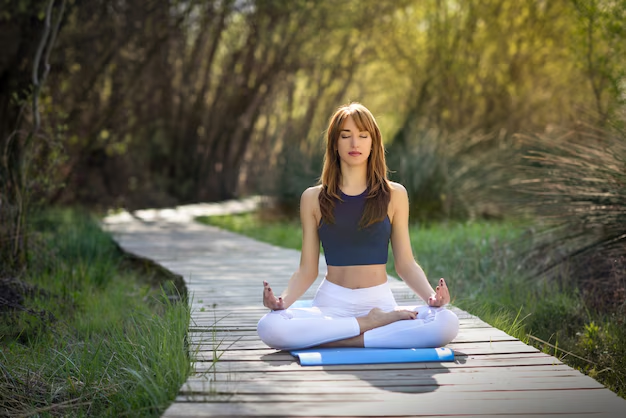Yoga and Meditation:- Yoga and meditation have quickly gained in popularity over recent decades, due to scientific evidence showing their positive benefits on those who practice regularly. If this article doesn’t answer all your questions about these two practices – read on! We will explain everything!
What Is Meditation?
Meditation is an accessible practice that anyone, regardless of experience level, can do. With many types of meditation available that can help create a calm and focused state in your mind. People meditate for different reasons: some use it to reduce stress or anxiety levels while others do it to feel more connected to themselves and their bodies or for health purposes (lowering blood pressure or cortisol levels, for instance). Meditation can open your eyes to new aspects of yourself that could provide new insight. Meditation may even serve as an additional form of self-care practice!
What Is yoga?
Yoga is a practice characterized by poses, breathing exercises and sometimes meditation. There are different forms of yoga such as Hatha yoga and Vinyasa flow yoga that you can try out to see which best fits you – you might discover one you prefer more than another! Yoga offers many health benefits like increased flexibility and reduced joint pain.
Yoga may help improve sleep quality and decrease stress levels, connecting with your body more fully in the present moment and feeling more present with yourself and with life in general. Yoga also serves to connect emotions while improving both mental and physical well-being.
1) Get Started With A Guided Meditation
If you’re new to meditation, guided meditation sessions may be helpful in getting started. Guided sessions provide an easy way for beginners to ease into their first few meditation sessions and build their comfort level; recordings such as Calm or Headspace have some available for download, or you could ask someone who practices it to guide your first sessions – invite a friend along so they can practice alongside you and ease into it together!
2) Try A Hatha Or Flow Yoga class
Hatha and flow yoga classes can be found at studios or gyms nearby as well as online. Beginners to yoga may wish to start out with Hatha yoga to ease into the practice and alleviate any concerns they have with poses being performed correctly; more intense Flow classes offer greater challenge for more adventurous yogis.
After selecting your class, the next step is deciding how often to attend it. Most studios provide different class types and times so you can find one that works with your schedule – by attending at least two classes every week you may find yourself feeling more relaxed, less stressed out, and with renewed energy!
3) Find A Yoga Instructor You Like And Commit To a Class

Once you’ve experienced yoga classes and found one you enjoy, commit to attending regularly. Doing this creates structure in your week, as it will increase the odds that you attend class regularly.
Finding an instructor you enjoy and connect with can also be very helpful when looking for yoga classes. By making the commitment, it can increase attendance rates and heighten enjoyment – two benefits which have tremendously positive ramifications on mental health and well-being, helping reduce stress while increasing energy levels, connecting you to emotions and body, as well as providing opportunities to build community within yoga.
4) Start With A Short Daily Routine
Start small if you want to get into meditation: begin with 5-10 minutes each day for five to ten days at first and if it feels beneficial increase gradually the amount of time spent meditating. If this is your first yoga experience or practice then begin slowly as it could take several months or years until your practice matures fully.
Make time for yoga and meditation regularly and see which poses speak to you. Practice for 10-20 minutes each morning or evening until one clicks for you! For maximum effectiveness, attempt to practice both every day.
5) Which Poses To Start With?
There are various yoga books and online resources that offer recommendations for challenging poses; however, beginners don’t necessarily have to begin their yoga practice by starting with more challenging ones – there are numerous poses tailored specifically for beginning yogis.
They include the following poses and practices: – Sitting Pose (Easy Pose), Lying Pose (Corpse Pose), Standing Poses (Tree Pose) and Breathing Exercises. These exercises form part of many yoga practices.
Also Refer:- 5 Best Ways to Exercise You Stressfree
Conclusion
Yoga and meditation can help you feel more relaxed, less stressed, connected to yourself and emotions more closely, sleep better and lower blood pressure. Both practices can be found locally or online as classes; you can even practice alone at home. Plus there are multiple types of both practices!
If you’re new to either practice, it may be beneficial to begin by enrolling in a guided session. After trying a few classes and finding one you enjoy attending regularly, commit yourself to regular attendance of this type of practice to increase relaxation, reduce stress levels, and feel more connected with both emotions and body.


